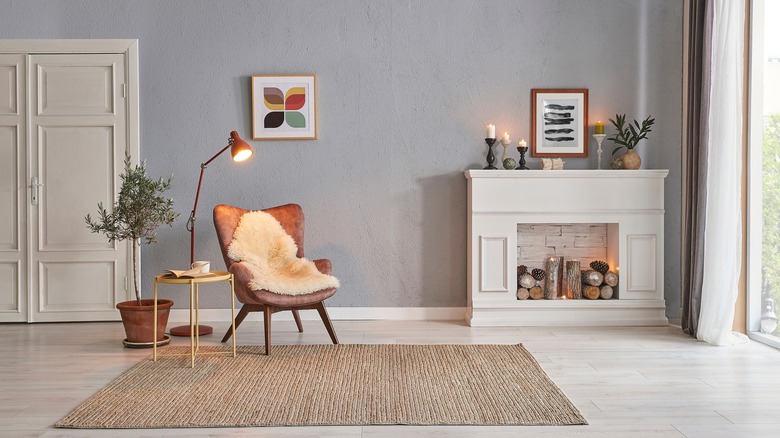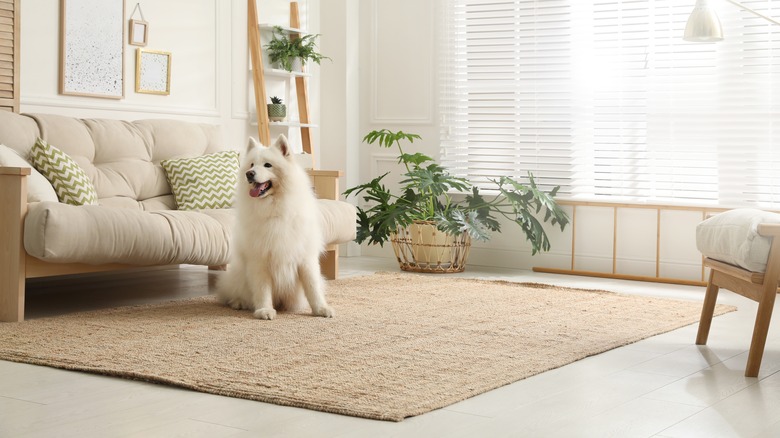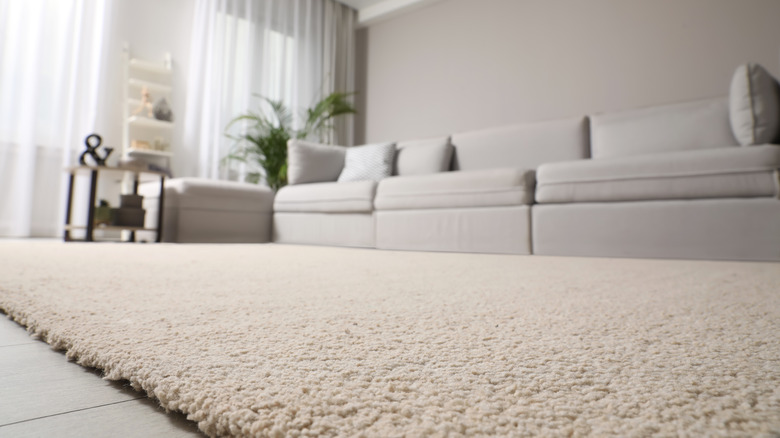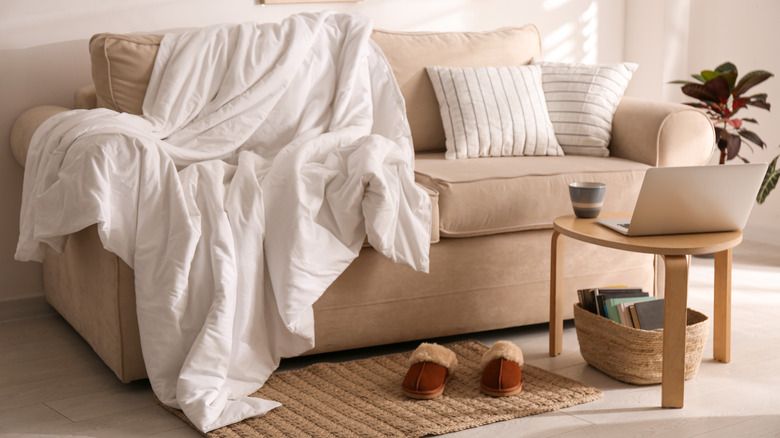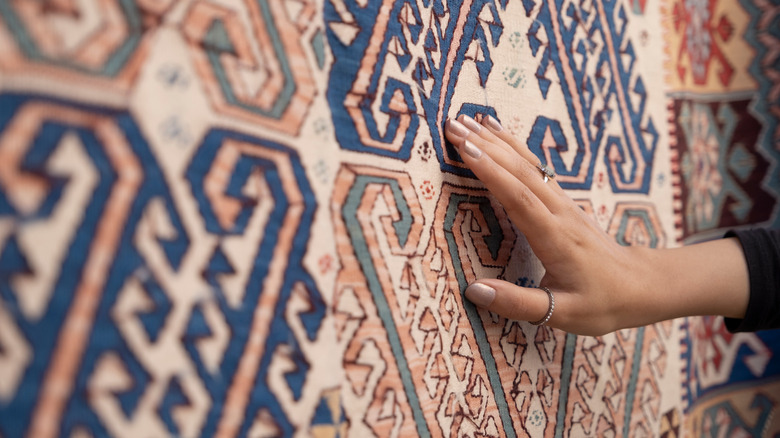Why Natural Fiber Flooring Is Perfect For Your Home
Natural fiber flooring includes many options, from silk to jute. All American Flooring states this type of flooring is made of renewable resources that are harvested directly from nature rather than being produced from synthetic materials. Polypropylene, nylon, and triexta are a few examples of synthetic flooring options, and while there are benefits to both natural and synthetic flooring materials, there are several reasons to go with a natural choice.
Natural fiber flooring might be the best option for your home if you have chemical sensitivities, according to Natural Floors. Because fewer chemicals are used to produce natural fiber floors, the manufacturing of these products also results in less damage to the environment. And, unlike synthetic options, when your flooring is worn out, it is biodegradable, so it will spend much less time decomposing in a landfill. Whether you have an active family and need a heavy-duty rug or are looking for something luxurious for your bedroom, there is a natural fiber flooring option perfect for your space.
Jute
Jute has a long history of being used for flooring. The jute plant, also called the "golden fiber," is native to the Indian subcontinent where it grows in tropical areas with high humidity, states the Food and Agriculture Organization of the United Nations. Because jute requires so little fertilizer and pesticide usage, it is considered an exceptionally eco-friendly choice for flooring. Reports of handmade jute mats go as far back as 2000 B.C. in the Indus Civilization. So, it's safe to say that jute flooring is nothing new (via Lawrence of La Brea).
Modern versions of jute flooring include beautiful patterns and since it is a natural fiber, it absorbs dyes well, making it a good option for those wanting a natural look or something with a pop of color. Since jute is so easy and inexpensive to grow, that savings is often passed on to the consumer, so it is also an inexpensive rug option.
Wool
Wool is a fabulously luxurious flooring option that is also practical. This material dates back to 11,000 years ago when sheep became domesticated in central Asia. Green Building Supply states sheep raising was the world's first organized industry, and from this industry, wool production was born. This material is not only excellent for making warm sweaters, but it acts as floor insulation — beautiful, soft floor insulation.
The natural fibers of wool also help absorb allergens from the air, like pollen and pet dander, holding them in place until you vacuum them up. Wool fibers even safely remove excess moisture from the air and release it when humidity is too low. This flooring material is flame- and static-resistant without the need for chemical fabric softeners. For those sensitive to or concerned about VOCs (also known as volatile organic compounds), wool flooring is an excellent choice because of all the materials used in the home, it is among the lowest emitters of these chemicals. Who would have thought an ancient fiber could be so useful and versatile in the modern home?
Cotton
By now, you may have noticed a theme. Natural fiber rugs have been used for millennia, and cotton rugs are no exception. Rugs2Runners says the earliest discovery of cotton was in the Tehuacan Vally of Mexico around 5500 B.C., but signs of ancient cotton have been found all around the world. Used for everything from cotton swabs to beautiful fabric baskets, this natural material is a big part of our day-to-day lives — and it makes for a nice rug.
Cotton is both soft and strong, with sturdy fibers that hold dye well. While you can buy 100% cotton rugs, Land of Rugs states that cotton rugs are often blended with other natural fibers for extra softness and durability. Since cotton is widely grown, the raw material is not difficult or expensive to find or produce, so these rugs are generally inexpensive. Small cotton rugs can usually be tossed in the washing machine for a quick clean while larger rugs stand up well to standard carpet cleaners. Always check the cleaning instructions before washing your rugs.
Sisal
Sisal is similar to jute both in the way it looks and how it is manufactured. Whereas jute comes from the stem of the jute plant, sisal comes from the leaves of the agave sisalana plant, according to Sisal Carpet. The primary difference between these two materials is their softness and durability. Jute can be manufactured to be soft, while sisal is more coarse, which also makes it more durable.
If you are looking for a rug for an outdoor space or high-traffic areas, sisal may be the best choice. Outdoor spaces, entryways, and mudrooms can all benefit from the durable nature of this option. The good news about sisal rugs is you do not have to sacrifice beauty for durability. Since this is a natural, plant-based fiber, it is absorbent and accepts dyes well. For homes with pets or in regions with lots of rain or snow, a sisal rug in your entryway can save your floors while still looking lovely.
Silk
When you hear the word "silk" you automatically think of luxury. Silk clothing, silk sheets, and silk draperies have historically been reserved for the most wealthy, but silk is not just beautiful, it is strong. Woods Rug Laundry states the reason silk can be used for such intricate designs is due to its exceptional tensile strength, which allows the thin fibers in high-quality rugs to be knotted up to 1,500 times per square inch. It's pretty obvious why silk rugs are not cheap, especially compared to the other natural fiber flooring options on our list.
Silk is sometimes woven with a cotton backing, which helps bring the cost down and make the rug more durable. While silk itself is strong, it is not recommended for high-traffic areas. If you are considering a silk rug to add beauty to a space, make sure it is an area free from frequent spills and muddy shoes. One of the best things about silk rugs is that, when properly treated, they make valuable family heirlooms that can last for decades.
